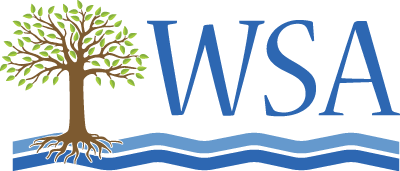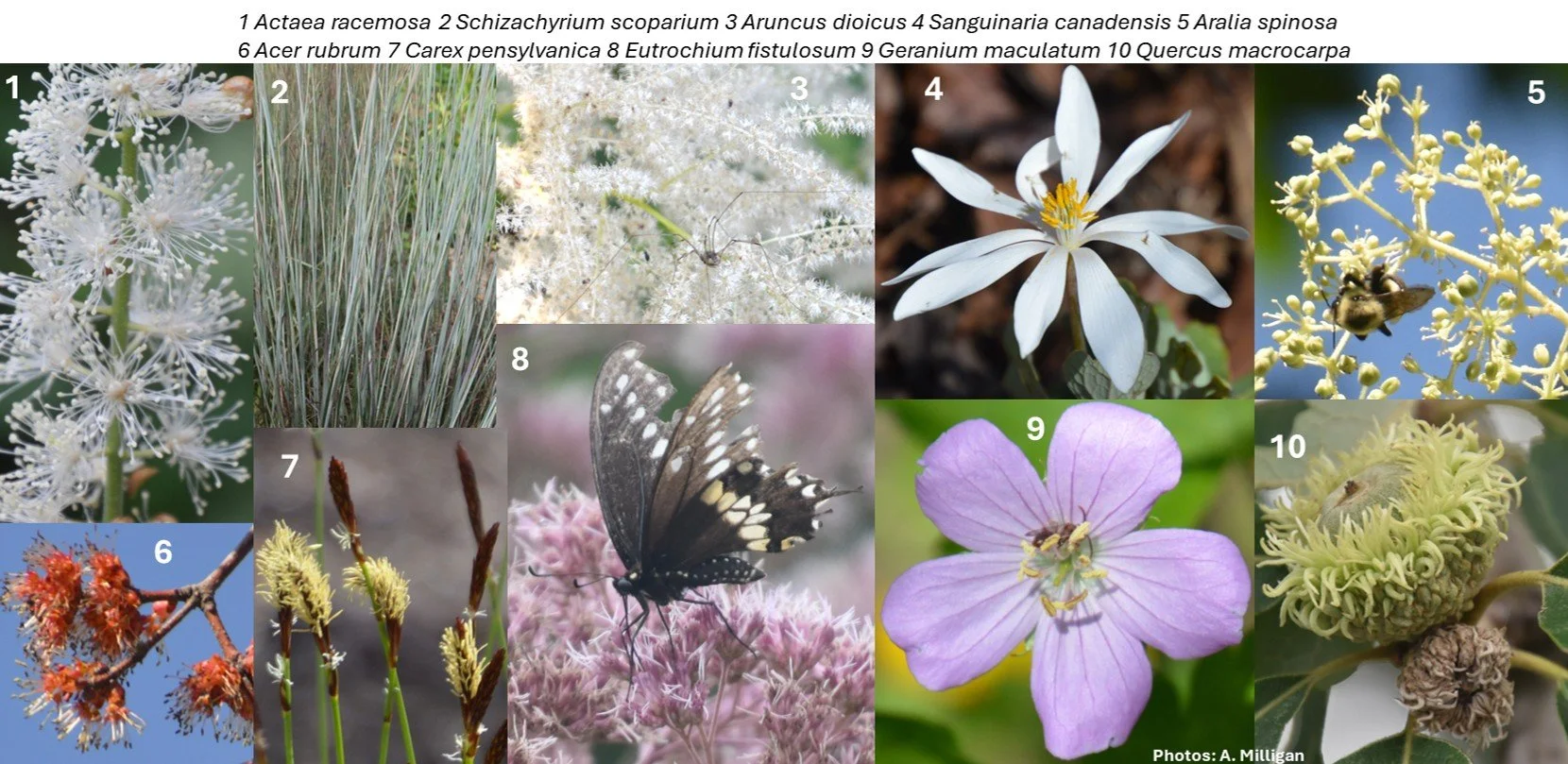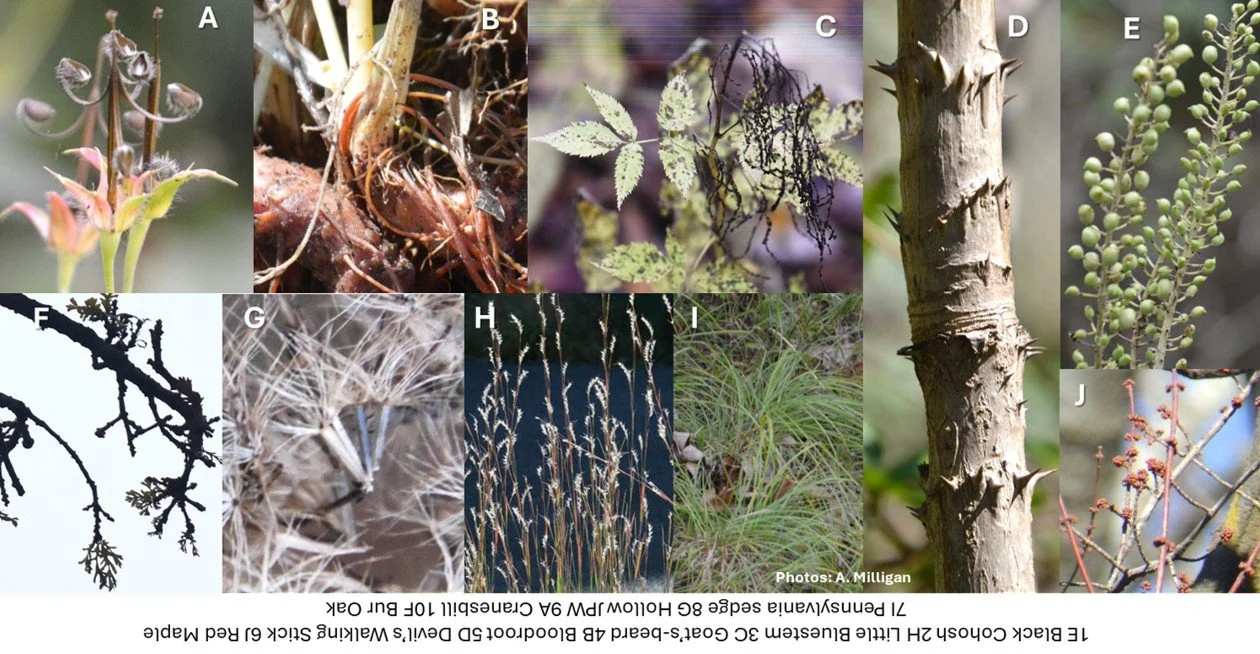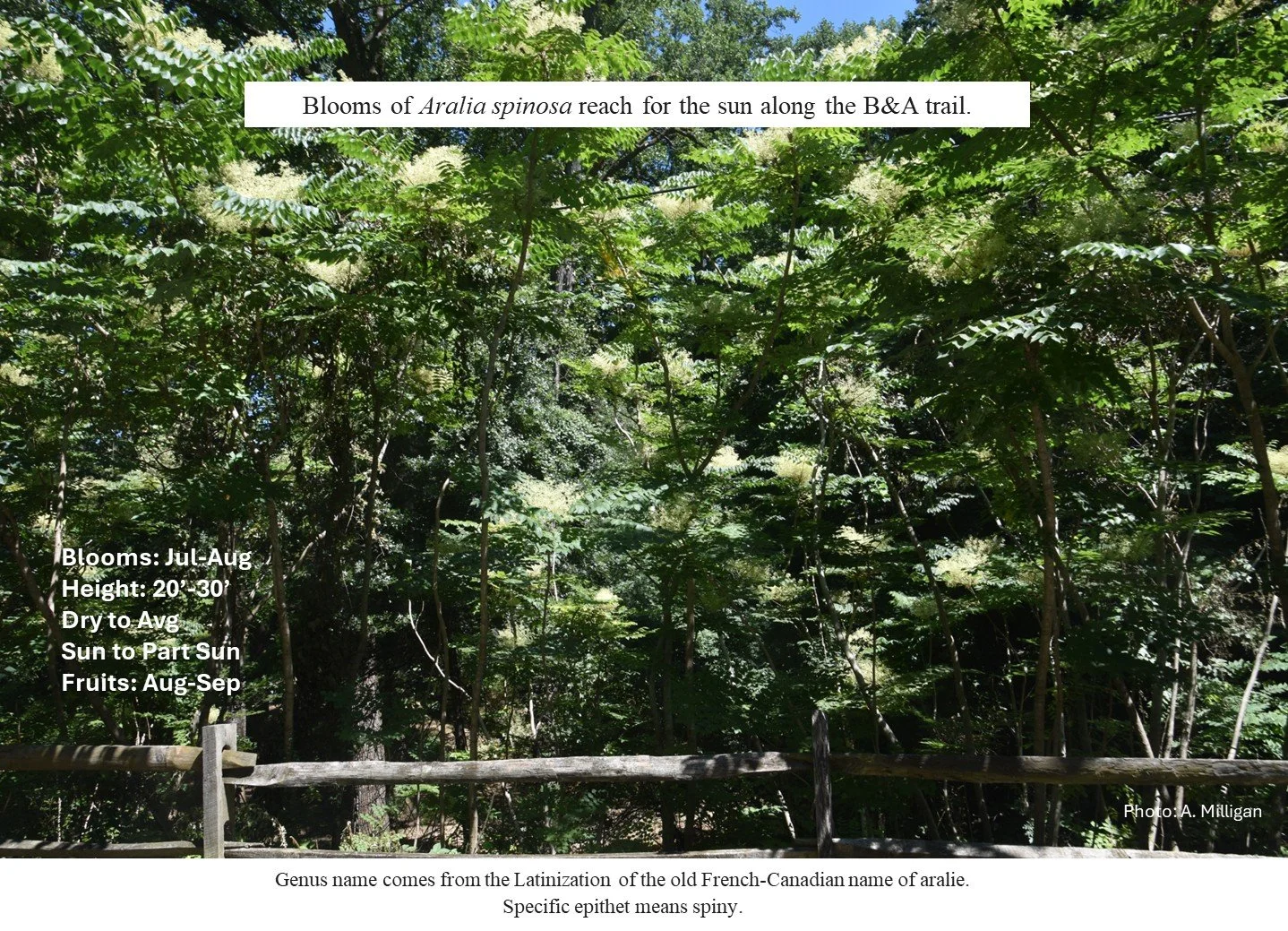Latin for Gardeners
December’s Native Maryland Plant:
All of them!
Hello Master Watershed Stewards, Naturalists and Gardeners! I hope you enjoyed planting many native plants this year: to manage stormwater runoff, support biodiversity and create a healthier environment for all of us. It’s time to test your knowledge of the botanical names of the plants that were featured in 2025’s ‘Latin for Gardeners’. It’s always best to use the Latin names of plants when you recommend them to friends and the public – there’s only one botanical name for a plant, so it avoids confusion and ensures people select the right plant when shopping at nurseries.
The first group of photos shows the plants in their bloom time with their botanical name listed. The second group shows them in in their winter dress. Do you still recognize them? Can you match the number of each plant in bloom to the letter of them in winter? Good luck, or as they say in Latin, “Fortuna!”
Alison Milligan – Master Gardener/Master Naturalist
Watershed Steward Class 7/Anne Arundel Tree Trooper
Chesapeake Bay Landscape Professional (CBLP)
alison@lifewithnativeplants.org













